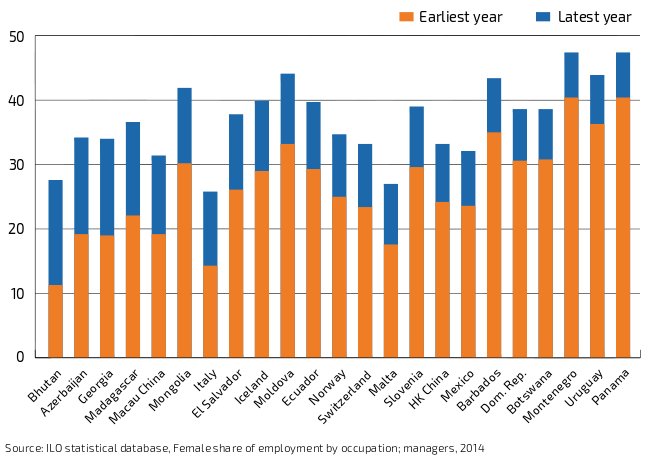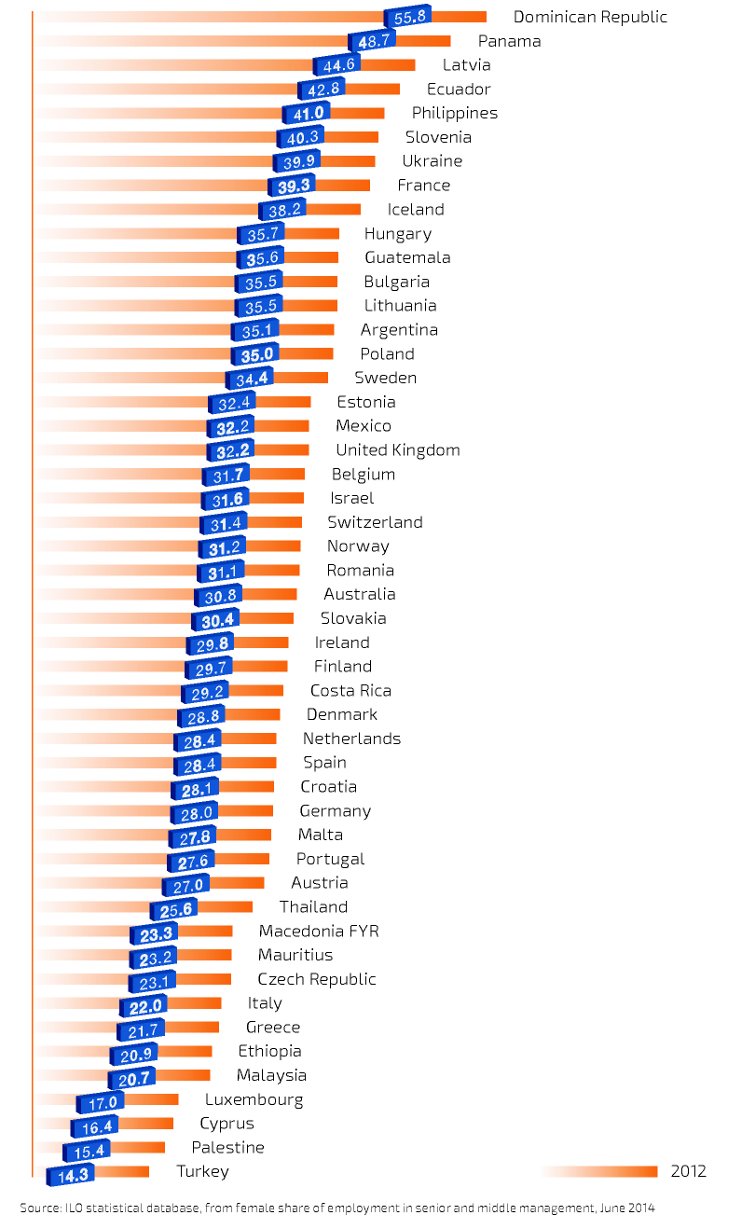A new study by the International Labour Organisation (ILO) confirmed the link between the number of women in management and better business results. The organization calls for a stronger representation of women in management.
The study entitled Women in Business and Management: Gaining Momentum notes that although women are still underrepresented in top management, the number of women in middle and senior management has been growing in the last twenty years. Specifically, it grew in 80 out of the 108 countries involved in the study. There are still only 5% of women in top management of the world's largest companies. The bigger the company, the less it is likely to be led by a woman.
Female representation at all management levels to 2012
| Position | Country | Percentage of women | Year |
| 1. | Jamaica | 59.3 | 2008 |
| 2. | Colombia | 53.1 | 2010 |
| 3. | Saint Lucia | 52.3 | 2004 |
| 4. | Philippines | 47.6 | 2012 |
| 5. | Panama | 47.4 | 2012 |
| 15. | USA | 42.7 | 2008 |
| 25. | Russia | 39.1 | 2012 |
| 30. | Poland | 37.8 | 2012 |
| 41. | United Kingdom | 34.2 | 2012 |
| 45. | Slovakia | 33.1 | 2012 |
| 55. | Germany | 31.1 | 2012 |
| 69. | Czech Republic | 26.2 | 2012 |
(Source: ILO Statistical database, 2014)
Countries with more than 7% growth in the number of women in management in the years 2002-2012 | Women representation in senior and middle management in 2012 |
(Source: ILO Statistical database, 2014)
The study describes the fourteen most frequent obstacles that prevent women from getting more involved in management. The first three include more family responsibilities, the role attributed to women by society, and the masculine corporate culture. Other factors mentioned include an insufficient number of role models for female managers, an insufficient number of leadership programs for women and insufficiently flexible work schedules. Companies also lack programs to support women and strategies for the retention of skilled women.
The situation can be improved using the following measures:
-
Raising awareness of the importance and benefits of a higher representation of women in leadership,
-
establishing diversity and equal opportunities policies,
-
training managers on the issues of gender stereotyping and diversity,
-
assessing the needs of employees in the subject of family care,
-
actively supporting men to get more involved in family care,
-
providing assistance in child care,
-
career planning strategies for both men and women,
-
offering equal access to training and development for both sexes,
-
introduction of flexible working arrangements,
-
programs focused on maintaining contact with employees during their career breaks and managing their return back to work,
-
appointing women in strategic roles within senior and top management,
-
creating positive role models.
-kk-




